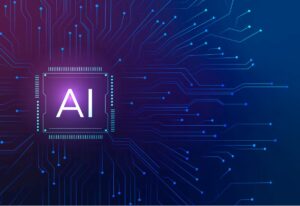Machine learning (ML), a branch of artificial intelligence (AI), is the branch of computational science that is concerned with the analysis and interpretation of patterns and structures in data to enable learning, reasoning, and decision-making without the involvement of a human. Simply defined, machine learning enables users to send massive amounts of data into computer algorithms, which then analyze, recommend, and decide using only the supplied data.
The algorithm can use the knowledge to improve its decision-making in the future if any corrections are found.
History of Artificial Intelligence
Although the term artificial intelligence (AI) was first used in 1956, it is now more widely used as a result of larger data volumes, sophisticated algorithms, and advancements in computing and storage.
In the 1950s, early AI research looked into issues including symbolic approaches and problem solving. The US Department of Defense became interested in this line of work in the 1960s and started teaching computers how to simulate fundamental human reasoning. Street mapping efforts, for instance, were accomplished in the 1970s by the Defense Advanced Research Projects Agency (DARPA). And in 2003, years before Siri, Alexa, or Cortana were well-known, DARPA built intelligent personal assistants.
This early work set the path for the formal reasoning and automation we see in computers today, including decision support systems and smart search engines that can be created to complement and enhance human abilities.
The current advancement of AI technologies isn’t that dangerous – or quite that smart – despite the fact that Hollywood movies and science fiction books portray AI as human-like robots that take over the world. Instead, AI has developed to offer a wide range of specialized advantages across all industries. For instances of artificial intelligence in use today in fields like healthcare, retail, and more, keep reading.
What is artificial intelligence?
Artificial intelligence is a constellation of many diverse technologies working together to enable robots to sense, interpret, act, and learn with human-like levels of intelligence. It’s possible that this is the reason why different people define artificial intelligence (AI) differently: AI encompasses a variety of concepts.
The panorama of AI includes technologies like machine learning and natural language processing. Each is developing along its own trajectory and, when used in conjunction with data, analytics, and automation, can assist organizations in achieving their objectives, whether they be enhancing customer service or streamlining the supply chain.
How Does Artificial Intelligence Work?
Three components make up machine learning:
- The fundamental computing algorithm used to arrive at conclusions.
- Qualities and factors that influence the decision.
- Basic knowledge that already has the solution is what allows (trains) the system to learn.
The model is initially fed parameter data for which the solution is known. The algorithm is then applied, and changes are made up until the output (learning) of the algorithm matches the correct response. As the system learns and processes more complex computational judgments, larger and larger amounts of data are now being entered.
Uses of Machine Learning
Artificial intelligence (AI) developments for applications like computer vision (CV) and natural language processing (NLP) are assisting sectors like financial services, healthcare, and automotive to speed innovation, enhance customer experience, and cut costs.
All types of businesses, including manufacturing, retail, healthcare and life sciences, travel and hospitality, financial services, and energy, feedstock, and utilities, can benefit from the use of machine learning, use scenarios consist of:
Efficiency and automation:
Companies might begin by identifying the repetitive, time-consuming operations that can be automated. Once these jobs have been discovered, firms can automate them using techniques like ML algorithms and robotic process automation (RPA). Companies can also develop an automation roadmap that ranks tasks according to how they will affect productivity and efficiency.
Predictive Analytics
Data collection and organization are essential for personalization and predictive analytics. Organizations can employ machine learning (ML) algorithms to examine collected data and spot patterns and trends. If the data being studied relates to customers, then this analysis can be used to develop predictions about behavior and preferences, allowing businesses to tailor their products. Then, businesses may make better use of this information to increase customer retention and marketing efforts.
Machine learning
Systems that collect enormous volumes of data frequently use machine learning. For instance, data is gathered by smart energy management systems from sensors attached to various assets. Machine learning algorithms contextualize the massive amounts of data before delivering it to your company’s decision-makers so they can better comprehend energy usage and maintenance requirements.
Revolutionized
The way that modern organizations work has been changed by artificial intelligence (AI) and machine learning (ML), making them more profitable. In this essay, we examine the importance of these revolutionary technologies and their effects on the commercial environment.
Internet and data research
Artificial intelligence analyzes a massive quantity of data to spot trends in users’ search patterns and give them more pertinent information about their situation. Users will enjoy a more personalized experience as they use their devices more frequently and as AI technology improves. This has huge implications for your small enterprises because it will make it simpler for you to target a highly niche market.
Rahnama continued, “We’re not expecting the customer to continually be on a search box Googling what they need. The idea of how to get the appropriate information to the right person at the right moment is changing.
Personal digital assistants
Artificial intelligence can be used for more than just giving your customers a more tailored experience. It can also transform the way your organization runs from the inside. AI assistants can be used to manage emails, keep track of your calendar, and even provide suggestions for streamlining procedures.
You can also program these AI helpers to answer queries for clients who phone or chat online. These are all modest activities that add up because they provide you more time to concentrate on putting growth-oriented tactics into action.
Please read: Modernization of Debt Collection
Why is artificial intelligence important?
- AI automates data-driven repetitive learning and discovery. AI conducts regular, high-volume, automated tasks instead of automating manual ones. And it does it consistently and without growing weary. Humans are still necessary to set up the system and formulate the proper inquiries, of course.
- Existing products gain intelligence thanks to AI. AI capabilities will be added to many of the items you already use, much way Siri was brought as a feature to a new generation of Apple products. Large volumes of data can be used with automation, conversational platforms, bots, and smart machines to advance numerous technologies. Improvements at home and at business include everything from smart cameras and security intelligence to investment analysis.
- AI adapts by using algorithms for progressive learning, which allow the data do the programming. Data is organized and regularized by AI so that algorithms can learn. An algorithm can train itself to play chess, just as it can train itself to recommend a product online. When fresh data is provided, the models also adjust.
- AI uses neural networks with numerous hidden layers to interpret more and more data. It used to be impossible to create a fraud detection system with five hidden layers. Big data and incredibly powerful computers have transformed everything. Deep learning models require a large amount of data because they derive their knowledge directly from the data.
- Deep neural networks enable extraordinary accuracy in AI. Your interactions with Google and Alexa, for instance, are all based on deep learning. And the more you use these things, the more accurate they become. Deep learning and object identification AI techniques are now being applied in the medical industry to more accurately identify cancer on medical photos.
- AI maximizes the use of data. The data itself is a benefit when algorithms are learning for themselves. The answers are in the data. To find them, you simply need to use AI. Data may give you a competitive advantage because its role is more crucial than ever. Even if everyone in an industry is using similar strategies, the best data will prevail if you have it.
The Potential of AI
How might artificial intelligence be employed in the future? Although it is difficult to predict how technology will advance, the majority of experts believe that those “commonsense” jobs will become even simpler for computers to perform. That implies that robots will be very practical in daily life.
According to Curation Zone’s CEO and creator Russell Glenister, artificial intelligence is beginning to make technologies like driverless automobiles that were formerly thought to be impractical. Fast GPUs and access to training data are two essential factors that make driverless cars possible. An large amount of precise data is needed to train driverless automobiles, and completing the training quickly is essential. Although the processors were too slow five years ago, the invention of GPUs made everything possible.
We’ve always relied on a two-dimensional display to play a game or engage with a webpage or read an e-book,” Rahnama added. The environment will serve as the primary interface as a result of artificial intelligence and the Internet of Things, rather than the display currently being used. In connected buildings or connected boardrooms, you’ll see individuals constructing experiences around them. These 3D experiences will be physically immersive.
Conclusion
From healthcare to manufacturing to transportation, AI and ML are revolutionizing how organizations run. Organizations can acquire a competitive edge and open up new possibilities for growth and innovation by identifying the most important use cases, making investments in a solid data infrastructure, and developing the appropriate skills and experience.
Businesses of all sizes can take use of these revolutionary technologies to increase productivity, tailor customer experiences, and identify possible dangers before they materialize thanks to the growing availability of AI and ML tools and platforms. AI and ML are the business technologies of the future, and companies who adopt them will be best prepared to succeed in the coming years.





